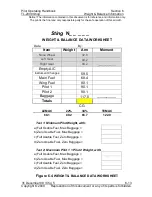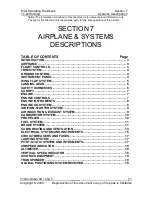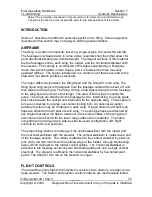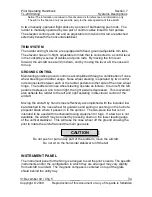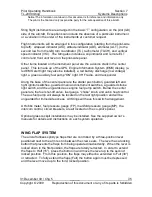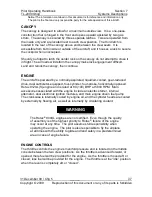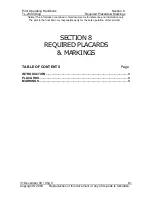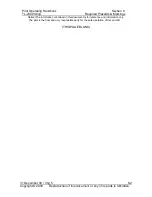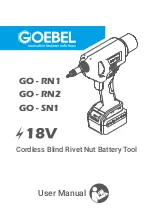
Pilot Operating Handbook
Section 7
TL-2000
Sting
Systems Descriptions
Notice! The information contained in this document is for reference and information only.
The pilot is the final and only responsible party for the safe operation of this aircraft.
31 December 09 / Chg 5
______
7-10
Copyright © 2009 Reproduction of this document or any of its parts is forbidden.
CARBURETOR SYSTEM
The aircraft’s Rotax
®
engine is equipped with two horizontally-mounted, float-type,
fixed jet, self-leaning carburetors. The right carburetor fuels the right side of the
engine, and the left carburetor fuels the left side of the engine. The purpose of a
carburetor is to mix air and fuel for combustion in the engine. Outside air is drawn
into the carburetor where a fuel jet will atomize fuel mixing them together. After
mixing, the fuel/air mixture is sent to the cylinders for combustion. Both
carburetors contain a rubber diaphragm that self-leans the mixture as altitude
increases. As air pressure changes, a diaphragm will move a piston controlling the
amount of fuel/air sent to the fuel jet. Both carburetors are also equipped with a
small starting carburetor, commonly referred to as a ‘choke’, for starting. Starting a
cold engine may be difficult, and the cylinders may need more fuel than air to burn.
A starting carburetor is used to enrich the fuel/air mixture thus allowing more fuel to
enter the combustion chamber. Both starting carburetors are tied to one control
knob labeled “choke” located near to the throttle lever in the cockpit.
PROPELLER
The aircraft has a three-bladed, fixed-pitch, ground-adjustable, composite
propeller. The core of each blade is made from either ash or beech wood and
coated with a carbon-fiber composite. Adjusting the pitch angle of the blades
should be performed only by precisely following directions provided the
manufacturer. Any cracks or nicks in the blades can cause a catastrophic failure of
the propeller. Therefore, if any flaws are discovered in the propeller, have them
repaired before operating the engine.
It is imperative that if the pitch of one propeller blade is
adjusted, each remaining propeller blade must be adjusted to
the exact same degree as the first. Indications of the blade pitch
angles being set differently are rough operation and vibration.
High Propeller pitch settings or different pitch settings on each blade
will cause vibrations that appear to be a rough idle.
WARNING
NOTE




